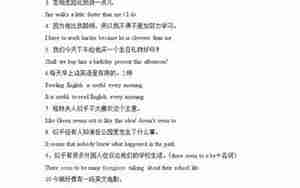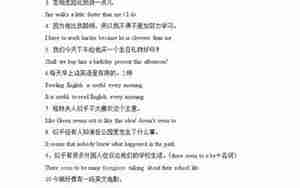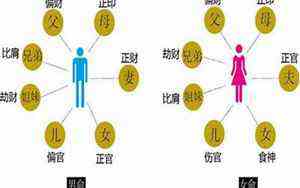
Title: "Unlocking Global Communication: A User-Friendly English Translation Tool for Seniors"
Introduction:
In today's interconnected world, seniors too are seeking to bridge the gap of understanding across cultures and languages. The digital landscape offers a powerful tool in the form of translation software, making international communication easier than ever. This insightful article, tailored for our aging demographic, explores the benefits, features, and ease of use of translation apps, turning even language barriers into stepping stones to global comprehension. With a growing need for accessibility, let's dive in and see how these tools are reshaping the way our grandparents connect with the world.
1. The Rise of Translation Technology
The rise of smartphones and the internet has led to the development of advanced translation software that doesn't require any prior language expertise. For instance, Google Translate, with its 13,000 language pairs, enables instant translation of messages, emails, and web pages, breaking down barriers for seniors who may not have had access to similar solutions in the past.
2. Ease of Use: User-Friendly Interface
These apps boast user-friendly interfaces, designed to simplify the process for technologically challenged seniors. For example, apps like iTranslate offer voice recognition and text-to-speech features, allowing users to speak directly into their device and receive accurate translations in real-time. This simple navigation makes them a go-to choice for those who prefer not to navigate complex menus.
3. Sentence-Level Translation: Going Beyond Basic Phrases
While early translation tools were mainly for translating headlines and simple sentences, modern apps like DeepL and Microsoft Translator provide context-aware translations at the sentence level, ensuring more accurate translations of idiomatic expressions and cultural nuances. This feature is especially valuable for those engaging in more nuanced conversations.
4. Benefits for Travel and Communication
For seniors who travel frequently, translation apps prove invaluable. A study by Skyscanner found that 42% of older travelers use translation apps to communicate with locals, highlighting their importance in fostering global connections. Whether it's asking for directions or understanding restaurant menus, these apps become personal interpreters.
5. Security and Privacy Concerns
It's important to note that while translation apps are convenient, they may raise privacy concerns. Seniors should always read the app's privacy policy and ensure that their personal information is protected during usage. Some apps, like TripLingo, offer a blend of translation and augmented reality, providing context while respecting privacy.
Conclusion:
In conclusion, translation software has emerged as a game-changer for seniors, democratizing global communication and enhancing their online experiences. By embracing these user-friendly tools, our elders can explore new cultures, connect with distant friends, and navigate the world with ease. As technology continues to evolve, it's exciting to imagine how even more advanced translation solutions might further bridge the gap between languages and generations.
英语翻译句子的方法步骤
Title: "Transforming English Translation: A Step-by-Step Guide for Seniors"
Introduction:
When it comes to communication beyond your native tongue, mastering English translation can seem daunting, but don't worry – the process is straightforward with the help of modern technology. This article, designed to guide our elderly readers, outlines a simple and efficient way to translate sentences using translation tools, making international correspondence accessible and enjoyable.
1. Choose Your Translation Tool
Begin by selecting a reliable translation app or online service. Google Translate, for example, is a popular choice due to its extensive language coverage and compatibility with smartphones, ensuring ease of use.
2. Prepare Your Text
Gather the sentence or text you wish to translate. Clear, simple sentences are easier to translate than complex ones with idioms or colloquialisms.
3. Input the Text
Most translation apps have a "text box" or "voice input" option. Seniors can type the sentence (if using a keyboard) or dictate their words if the app supports voice recognition.
4. Select Target Language
Indicate the language you want to translate into. For example, if you're a Spanish speaker and need to translate into English, choose "English" as your target.
5. Review the Translation
The app will provide a preliminary translation. Take a moment to read through it, checking for accuracy. If needed, many apps offer an option to correct or refine the translation.
6. Context Matters
Remember that translation apps are not perfect and might miss cultural nuances or slang. If a translation seems awkward or off, try searching for similar phrases online or consult a dictionary.
7. Adapt to the Target Language
Be prepared to adapt your sentence structure for clarity and naturalness in the translated language. English sentence structure can differ from other languages, so rearrange as needed.
8. Practice and Learn
Regular use of translation tools can improve your language skills. As you encounter more sentences, you'll become more familiar with the differences between languages and better at interpreting translations.
Conclusion:
english translation for seniors has never been simpler, thanks to user-friendly apps that take the guesswork out of language barriers. By following these steps, you'll be able to smoothly translate sentences and enhance your global communication. Embrace the power of technology, and remember that practice and patience are key to effective translation.
用英语翻译句子怎么翻译
In English, translating a sentence involves several steps that help ensure an accurate and context-appropriate message. Here's a brief guide for translating a sentence:
1. Understand the Original Text: Read the sentence in its original language carefully, grasping its meaning and context.
2. Decompose the Sentence: Break down the sentence into its main components: subject, verb, object, and any modifiers or phrases.
3. Identify Key Terms: Translating individual words or phrases is often straightforward. Be aware of idiomatic expressions, cultural references, and proper nouns that may require special attention.
4. Find Appropriate Equivalents: Research or use the translation function of your chosen tool to find the most accurate equivalent for each word or phrase in the target language.
5. Take Grammar into Account: Different languages have their own grammar rules. Make sure the sentence structure in the target language follows proper syntax and avoids awkward phrasing.
6. Preserve the Message: Keep the essence of the original meaning intact. Consider how to convey the intended emotion or tone, as sometimes words can lose or gain nuances when translated.
7. Proofread and Revise: Read the translated sentence aloud or have someone else review it to ensure it flows naturally and conveys the intended meaning.
Remember, translation is not just about word-for-word substitution; it's about capturing the essence of the message. By following these steps, even seniors can become proficient in translating sentences using modern tools.
用英语翻译句子用英语怎么说
The action of translating a sentence into English is referred to as "translating a sentence into English." Here's a direct translation of the phrase:
"To translate a sentence in English means to convert the content of a sentence from one language (generally another language) into its English equivalent, preserving the meaning and context while adapting to English grammar and syntax."
This process requires understanding, decomposition, and a deep knowledge of both the source and target languages to produce a clear and accurate translation.
prc代表什么呢用英语翻译句子
"PRC" in English stands for the "People's Republic of China." If you are translating a sentence that includes this abbreviation, it would be:
"For instance, PRC refers to the 'People's Republic of China,' which is the official name in English."
In a context where you're discussing the abbreviation, you might translate a sentence like this:
"In international or political discussions, PRC is commonly used to denote the People's Republic of China, the sovereign state that encompasses China proper and various territories."
英语翻译句子的基本顺序
The basic sequence for translating a sentence into English follows a logical progression that ensures accuracy and clarity. Here's a step-by-step guide:
1. Read and Understand: Read the original sentence in its source language carefully to grasp its meaning and context.
2. Decompose the Sentence: Break down the sentence into its core components - subject, verb, object, and any modifiers or phrases.
3. Identify Key Words and Phrases: Translate each word or phrase individually, focusing on idiomatic expressions, technical terms, and proper nouns.
4. Reconstruct the Sentence: Put the translated components together, considering the grammatical structure of the English language. Ensure proper subject-verb agreement, tense, and word order.
5. Check for流畅性 and Coherence: Read the translated sentence aloud or in your head to ensure it sounds natural and makes sense. Make sure the sentence flows and conveys the intended meaning.
6. Review and Edit: Cross-check with a dictionary, grammar guide, or native speaker if necessary, to refine the translation and correct any errors.
7. Contextual Considerations: Remember to account for cultural differences and nuances that may affect the meaning, especially in idioms and expressions.
By following this sequence, you can create a well-structured and accurate translation of a sentence in English.
英语翻译句子的方法有哪些
Translating a sentence into English involves several methods to ensure the meaning is conveyed accurately and naturally. Here are some common techniques:
1. Direct Translation: Begin with a word-for-word translation, focusing on maintaining the basic sentence structure and meaning.
2. Literal vs. Literary Translation: Consider whether a literal translation (grammatically accurate) or a literary translation (embracing cultural nuances and poetic expression) is more appropriate for the context.
3. Sentence Decomposition: Break down the original sentence into its parts, translating each component separately, and then reassemble them in English.
4. Phrase Translation: Focus on translating idioms, collocations, and phrases as a whole, as literal translations might not make sense in English.
5. Cultural Adaptation: Be aware of cultural differences and adjust the translation accordingly, avoiding language that may sound strange or offensive in the target culture.
6. Contextual Understanding: Consider the context in which the sentence is used to ensure that the translation conveys the intended meaning, such as humor, tone, or formality.
7. Use of Translation Tools: Utilize online translation services, dictionaries, or language learning apps to help with unfamiliar words or expressions.
8. Revise and Edit: After translating, review the sentence for grammar, clarity, and flow. Native speakers or language experts can be a valuable resource for this step.
9. Practice and Feedback: Regular practice and seeking feedback from others can greatly improve your translation skills over time.
By combining these methods, you can produce a well-rounded and accurate translation of a sentence in English.




























